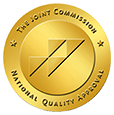
There is more than one path to getting better.
Some people get addicted to stimulants like Adderall and Ritalin because of pressure to succeed academically or in the business world. Some get addicted because of pressure on the field or the court. And some get addicted because of pressure to be thin.
At the end of the day, the best treatment is the treatment that considers all of your needs, hopes, challenges and ambitions.
In other words, treatment for stimulant—or any other—addiction is not one-size fits-all.
Now that we’ve got that out of the way, let’s take a look at the different kinds of treatment—and what might work for you.
Outpatient Treatment for Stimulants
In 2012, 116,000 people were admitted to rehab for addiction to amphetamines like Adderall and Ritalin. Full-time college students are twice as likely to abuse Adderall than their peers who aren’t in college.
The truth is that it can difficult to suddenly take a leave from college or a job in order to attend an inpatient rehab program. If signs of addiction are recognized early enough, many people do well getting treatment at an outpatient facility.
Just like inpatient rehab, there will be both individual and group therapy sessions. There will also be the camaraderie of meeting people in your same situation.
The downside is that you’ll be busier than ever, managing both your college or career and your recovery. If the thought of that is stressful, that’s a cue that outpatient rehab might not be the right call. Extra pressure is the last thing anyone needs while trying to overcome an addiction.
Inpatient Treatment for Stimulants
Although the physical withdrawal will be easier than with alcohol or heroin, stimulants like Adderall and Ritalin can be very difficult to overcome psychologically.
That’s because stimulants reduce the body’s natural production of dopamine, which can cause low moods and trouble feeling pleasure without the drug. Obviously, that results in cravings and temptation.
More Content Just for You
We know that overcoming an addiction to stimulants isn't easy. That's why we're here to help. Our 90-day treatment program utilizes proper nutrition and exercise to get you healthy and experience feelings of happiness again—without drugs.
Inpatient rehab can help you manage temptation in two ways: First of all, you won’t have easy access to stimulants. To get them, you’d have to leave rehab. Also, you won’t be fielding texts or visits from friends who threaten your recovery.
The second way that inpatient rehab is beneficial is that residents have round-the-clock access to help. If you’re miserable and ready to give up, there will be someone to talk you through it.
Inpatient rehab also offers one other huge benefit—time. Rather than rushing from work to meetings, you’ll have the time to take yoga classes, hang out with new friends, read books and relax.
Recovery at The Raleigh House
Adderall and Ritalin are Schedule 2 Controlled Substances, the same classification as cocaine and heroin. That means, if you’re addicted to them, you’ll need help getting better. The Raleigh House is a residential treatment center located in Denver that treats addiction, including Adderall and Ritalin. Fill out our form or contact us today to learn more about our stimulant addiction treatment program.




